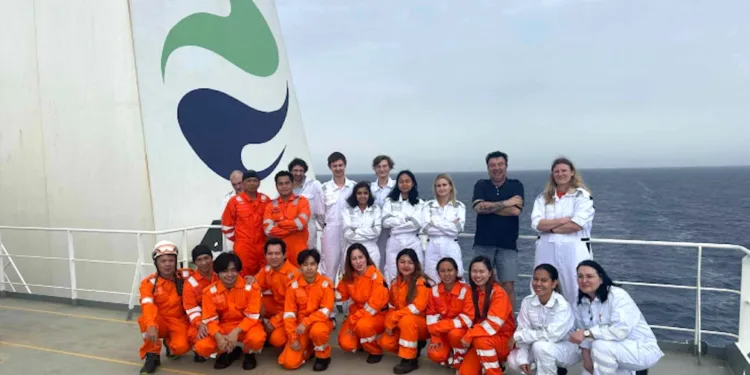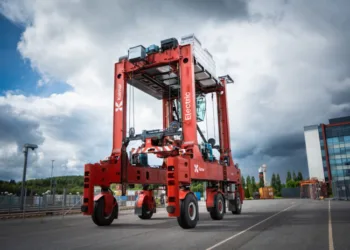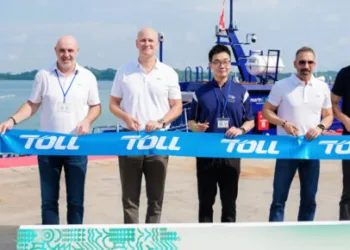The shipping industry risks undermining its own future if it continues to overlook those who keep it moving, argue Mikael Skov of Hafnia and Meei Wong of Circle DV, co-chairs of the All Aboard Alliance, as they urge stronger action to improve life at sea.
Every day, close to two million seafarers keep the world moving. They sail through storms, navigate congested ports, and manage complex vessels that transport 80% of global trade. Without them, shop shelves would empty, factories would slow, and the energy transition itself would stall. Despite their importance to the industry, the lives of those at sea are increasingly being treated as an afterthought.
The All Aboard Alliance, a coalition of companies and organisations committed to improving life at sea, has just launched its new 2026-2030 strategy. At the heart of the strategy is a simple but urgent truth: the maritime industry will only thrive if it becomes a safer, more attractive career path.
This strategy is not about short-term gains between now and 2030. It is about building the long-term resilience of supply chains, of maritime businesses, and of the people who make global trade possible.
Why this matters
Seafaring has always demanded sacrifice: long stretches away from home, physical risks, and relentless schedules. But growing systemic pressures, ones that are impossible to tackle alone, are meaning the balance between sacrifice and reward is eroding. Crews are working longer hours with smaller teams. Shore leave has dwindled. Food budgets are tighter. Reports of fatigue, harassment, and declining mental health are widespread.
These conditions are taking a toll. Suicides among seafarers are reported at rates far above global averages. Nearly a third of crew say they are chronically sleep-deprived. And with 75% of seafarers effectively working freelance, too many fall through the cracks of accountability.
This is not just a humanitarian issue—it is a strategic one. The industry faces a looming shortage of skilled officers. As living standards rise and competition with onshore jobs intensifies, the shipping industry is losing the very people it will need to help it digitalise and decarbonise.
A systemic challenge
These problems are not new, nor are they isolated. They are the result of decades of overlapping pressures: regulatory complexity, cost competition, and entrenched labour structures that incentivise efficiency at the expense of well-being. The result has been a race to the bottom that no individual company can escape.
That is why the All Aboard Alliance exists: to unite ambitious leaders across the maritime value chain to share solutions, test new approaches, and drive change together. In our new strategy, we’ve outlined four goals that define what a humanly sustainable maritime industry looks like:
· Safe working conditions, feeling protected from accidents, fatigue, and abuse.
· Improved physical and mental health, with better rest, nutrition, and care.
· Inclusion and diversity, to ensure everyone has a fair chance to thrive.
· Flexible and attractive careers, offering development, balance, and a future.
These goals are not meant to be aspirational slogans, but rather a framework for action. They guide ten focus areas, define conditions for success, and underpin commitments that allow us to measure, incentivise, and showcase progress. In short, they are a roadmap to ensure that by 2030, people truly are at the heart of every voyage.
The challenges facing seafarers are deep-rooted and systemic, and systemic change requires that we challenge assumptions, confront uncomfortable truths, and question entrenched structures. It’s something no single company or government can solve alone, but with shared ambition and collective action, we know that it is possible—and we want to take the lead in driving this change.
In recent years, the All Aboard Alliance has tested new ideas and shared practical learnings across companies and regions, notably with our Diversity@Sea pilot, a close collaboration between more than 20 companies, which resulted in the first-of-its-kind Sustainable Crewing Guidelines. The lesson is clear: progress comes not from working in isolation, but from collaboration—learning, debating, testing, and acting together.
With this new 2030 strategy, the Alliance will be tracking annual progress within the goals, showcasing what good, better, and best looks like by developing standards within each goal, and working together across the full value chain to incentivise the adoption of those standards. By uniting around shared goals, measuring impact transparently, and
supporting one another in driving change, we can make the maritime sector a place where people want to work, grow, and stay.
Looking ahead
Seafarers are the backbone of global trade. Their well-being is not only a moral responsibility but a strategic necessity for the resilience of global supply chains.
By 2030, the All Aboard Alliance wants every voyage to reflect a simple truth: those who keep the world moving deserve safety, dignity, and opportunity at sea. Achieving that vision will demand leadership, ambition, and collaboration across the value chain, and we invite others to join us on the journey.




















